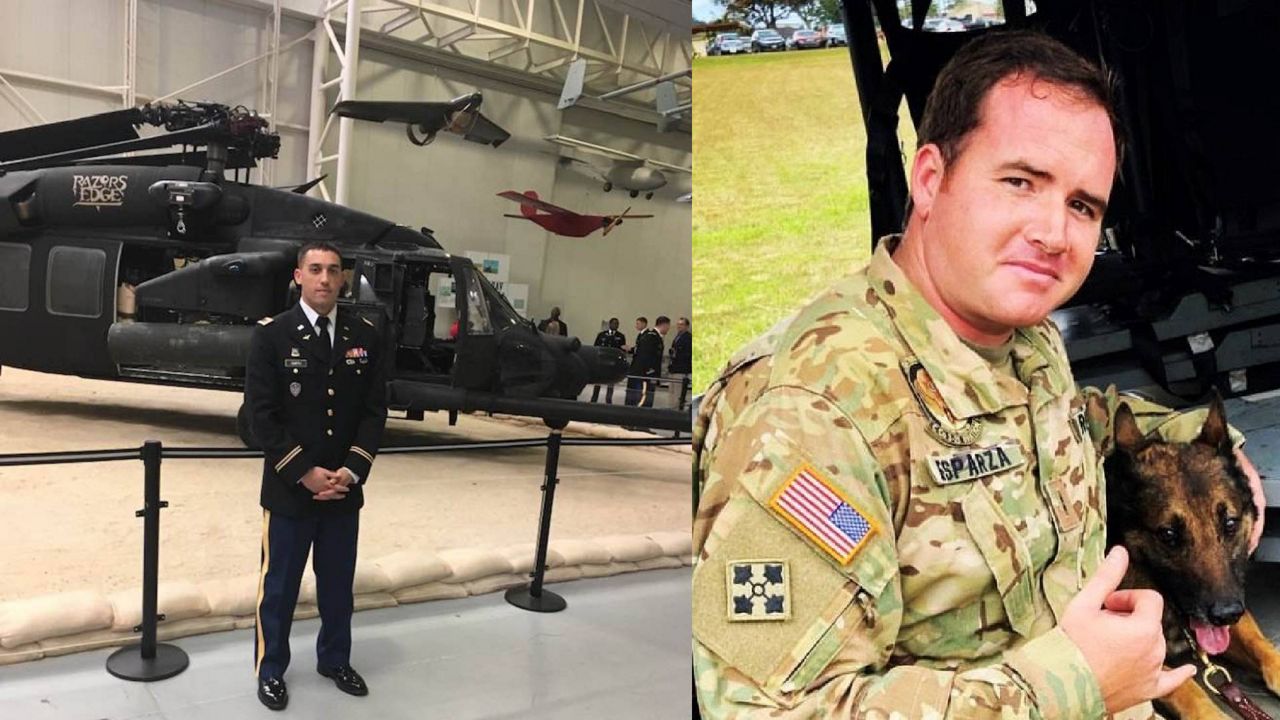LOUISVILLE, Ky. — The nine service members who died in a crash involving two U.S. Army Black Hawk helicopters ranged in age from 23 to 36 and were from seven states, including Missouri, the military said in releasing the names Friday as an investigative team continued its probe of the incident.
Among the fallen were Chief Warrant Officer 2 Rusten Smith, 32 of Rolla, Mo., and Chief Warrant Officer 2 Zachary Esparza, 36, of Jackson, Mo.
Others hailed from Florida, Texas, California, North Carolina, Alabama and New Jersey.
“This is a time of great sadness for the 101st Airborne Division. The loss of these Soldiers will reverberate through our formations for years to come,” said Maj. Gen. JP McGee, commanding general of the 101st Airborne Division (Air Assault) and Fort Campbell. “Now is the time for grieving and healing. The whole division and this community stand behind the families and friends of our fallen Soldiers.”
Missouri U.S. Sen. Josh Hawley was among those offering condolences on social media after the victim's names were released.
Two HH-60 Black Hawk helicopters crashed near Fort Campbell on Wednesday night in southwest Kentucky during a medical evacuation training exercise, killing all nine soldiers aboard the two aircrafts. The crash occurred in Trigg County, Kentucky, about 30 miles (48 kilometers) northwest of the Army post that is home to the 101st Airborne Division.
A special military investigative team was on the scene Friday but weather conditions have slowed the early work, Army officials said.
The team of about eight members from Fort Rucker, Alabama, arrived at the scene around 7 p.m. Thursday night but rain and wind have slowed their efforts, said Dawn Grimes, a public information officer at Fort Campbell.
“The investigation is active but it has been hampered by weather,” Grimes said Friday.
The two Black Hawks were flying together during a training exercise at night, Army officials said. The pilots were using night-vision goggles. The accident occurred during flying and not during the course of a medical evacuation drill, said Brig. Gen. John Lubas, the 101st Airborne deputy commander.
The Black Hawk helicopters have something similar to the black boxes on passenger planes, which records the performance of aircrafts in flight and are used by investigators to analyze crashes. Officials said they are hoping that device yields some information about the cause of Wednesday’s crash.
The crash was the deadliest training incident for the Army since March 2015, when a Black Hawk helicopter crashed into the water off the Florida coast in dense fog, said Jimmie Cummings, spokesperson for the Army Combat Readiness Center at Fort Rucker. Four soldiers from the Louisiana Army National Guard and seven Marine special operations forces were killed.
Cummings said the most deadly non-combat Black Hawk crash was in 1988 and also involved Fort Campbell aircraft. The crash – which had the third highest number of fatalities for an Army aircraft training mission – killed 17 troops when two helicopters collided in mid-air. The most deadly Army aircraft training incident was a Chinook crash in Germany in 1982, that killed 46 U.S. and international forces. The second was a C-23 Sherpa fixed wing aircraft crash in Georgia in 2001 that killed 21 Army and Air Guard personnel.
Fort Campbell also had a multi-aircraft crash in 1996, when two Blackhawks clipped propellers. The crash killed five soldiers. The last deadly aviation accident at Fort Campbell occurred in 2018, when an Apache helicopter crashed during training, killing two soldiers on board.
The Black Hawk helicopter is a critical workhorse for the U.S. Army and is used in security, transport, medical evacuations, search and rescue and other missions. The helicopters are known to many people from the 2001 movie “Black Hawk Down,” which is about a 1993 battle in Somalia.








